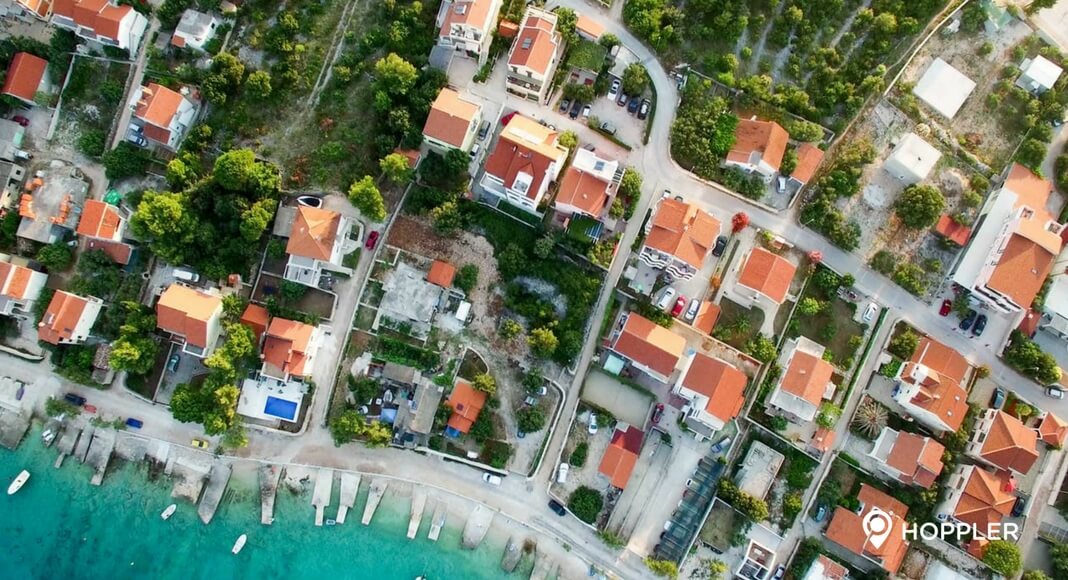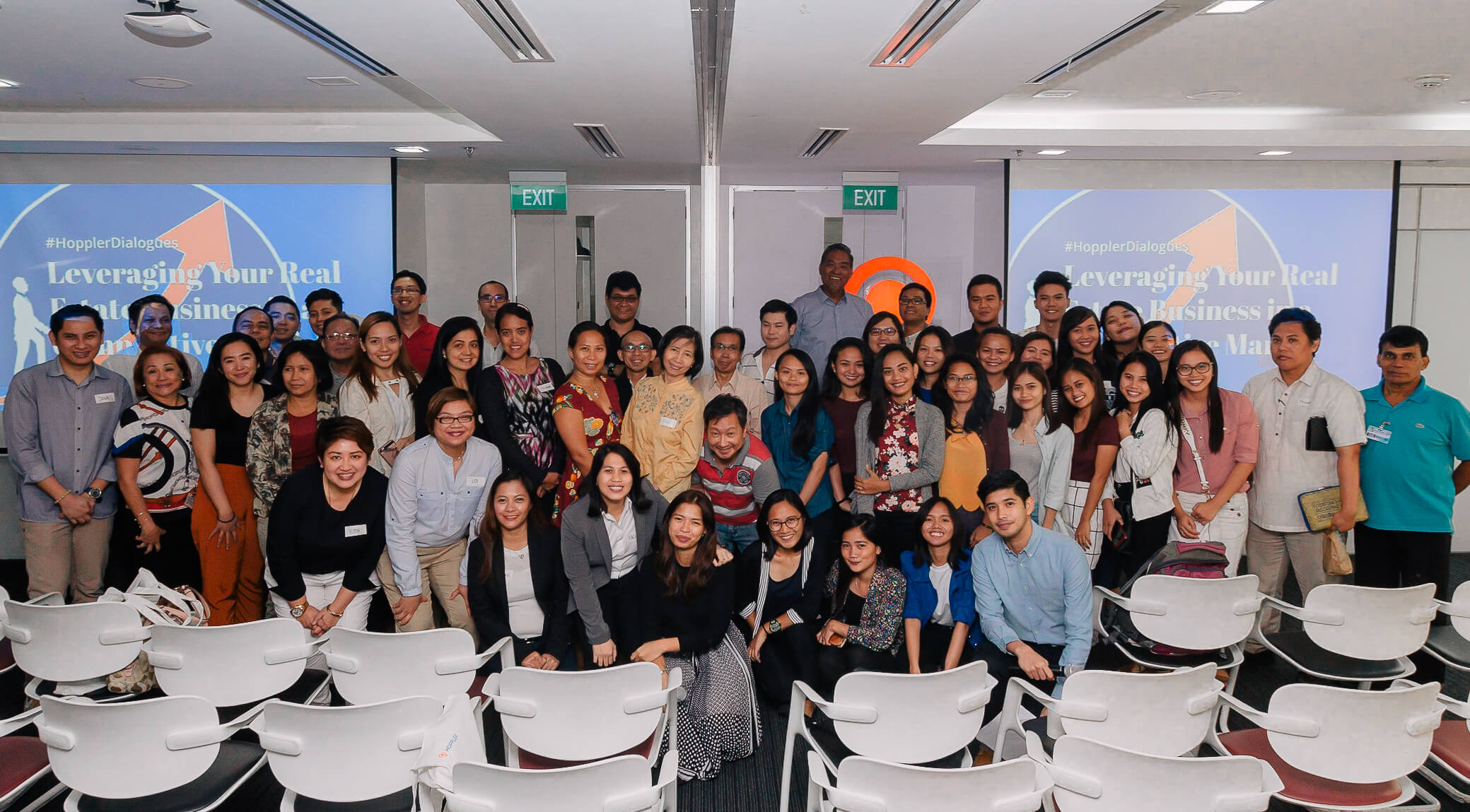Hoppler Celebrates Fourth Anniversary
In today’s saturated online real estate space, Hoppler is somewhat of an anomaly, but in a good sort of way. It may not be the largest portal in terms of the number of listings and volume of traffic, but it is definitely the most enduring, having been in operation since early 2014.
Hoppler is also perhaps the most prominent Filipino-owned real estate portal, working with local licensed real estate brokers, helping them generate leads and close deals with a lot of tech-savvy. Most importantly, it is the only platform in the Philippines where 100 percent of listings are unique, as the company takes an almost obsessive effort to quality-check every property that appears on its website. As it celebrates its fourth anniversary, Hoppler looks back to its beginnings and what made it a unique platform, and dishes out what’s in store for the future.
Beginnings
The very first version of Hoppler was created in 2014, when its CEO and co-founder Ramon Ballesca Jr. raised funding worth $200,000 from his high school friends. The year 2014 also proved to be auspicious for the platform, when the Elizalde-Roxas Corp. pumped Php22 million in fresh funding to the company, which helped spread the word about the business and fully launched the platform.
However, the real icing on its proverbial cake came later—in October 2017 to be exact—when Malaysia-based venture capital Frontier Digital Ventures invested $1.3 million into Hoppler. This came as a result of a pitch made by Ballesca at the Property Portal Conference in Bangkok in March 2017. This new capital infusion enabled Hoppler to fully market its services and take on its competitors head on.
Unique Business Model
Hoppler’s unique business model is somewhat of an anomaly in the local digital real estate scene. Unlike its larger counterparts who are purely listings platforms, Hoppler also functions as partner agent of listing brokers, which ensures that the company will assist in the transaction every step of the way. As partner agent, the company has a stake in every real estate transaction that transpires via its platform, so every effort is exerted to make sure that deals are successfully closed.
“Inquiries are generated via the platform and they are internally processed using a rigorous method to make sure that only qualified leads are passed on to our partner brokers,” according to Ballesca. “The company has a number of sales directors under its employ, who directly coordinate with partner brokers for all transactions. In this straightforward setup, Hoppler functions as the buyer’s agent while the partner broker as the seller’s agent, and the commission is evenly split.”
Another setup is when a qualified lead is generated via Hoppler for a property listed by one of its partner broker. If that broker is a long-term user of the platform, Hoppler can pass on the lead to them directly, and will get 30 percent of the commission.
Hoppler’s unique business model works perfectly well with the local real estate scene. Brokers normally do not have time, expertise, and resources to devise an effective online marketing campaign, and the company helps them by being their partner agent and an online marketer at the same time. And all its efforts are paying off.
As of 2018, Hoppler has processed more than 34,000 unique users who have inquired for properties using the platform. What’s more remarkable is that the number of unique inquiries through the website surged a whopping 286 percent from 2015 to 2017, proof that Filipinos are increasingly relying on the Internet to look for their next home. In addition, the total value of properties Hoppler transacted in 2017 is worth Php5.2 billion, up by 11.3 percent from 2016’s Php4.7 billion.
Of the real estate leads qualified by Hoppler in 2017, 80 percent are Filipino property-hunters, but a growing number are composed of foreign nationals, most notably Chinese, which according to Ballesca is fast becoming an important market of Philippine real estate because of the improving relations between the Philippines and China.
Kumita
One of Hoppler’s most useful features is Kumita (which is Tagalog for “to earn”)—a Web-based CRM that allows real estate brokers upload listings, check their listings’ performance, connect with their fellow brokers, and even automatically generate offer letters and lease contracts.
“Kumita makes the life of real estate brokers so much easier,” said Ballesca. “Brokers can now make letters of intent and lease contracts using their smartphones and email them directly to their clients. We’re even working on a new feature where they can digitally sign these documents using their phones.”
As of this writing, there are about 880 partner brokers working with Hoppler, more than 220 of whom are active, meaning they have uploaded or updated at least one property listing in the last 90 days.
The Future
Prospects for the Philippines’ online real estate landscape is indeed exciting, most especially for Hoppler. According to Ballesca, there is so much that the platform can offer in terms of data that its competitors can’t currently do. Two of which are the actual value of properties when transactions were completed and the amount of time a listing spend online before it gets snapped up.
“These I believe will show exactly how the market is behaving,” said Ballesca. “As we’re present in every stage of the transaction, we know exactly for how much a property was either rented or bought after a thorough negotiation, which gives us a glimpse of how much buyers are willing to fork over to sellers.”
“On the other hand, time spent online will give us a picture of the industry’s overall stance. When properties are taken off the market pretty quickly, it signals a seller’s market, which means sellers have the upper hand in pricing their properties. On the other hand, when listings stay online longer, buyers have the upper hand in the price negotiation.”
According to Ballesca, a complete analysis of Hoppler’s data will be made available in the middle of 2018.



